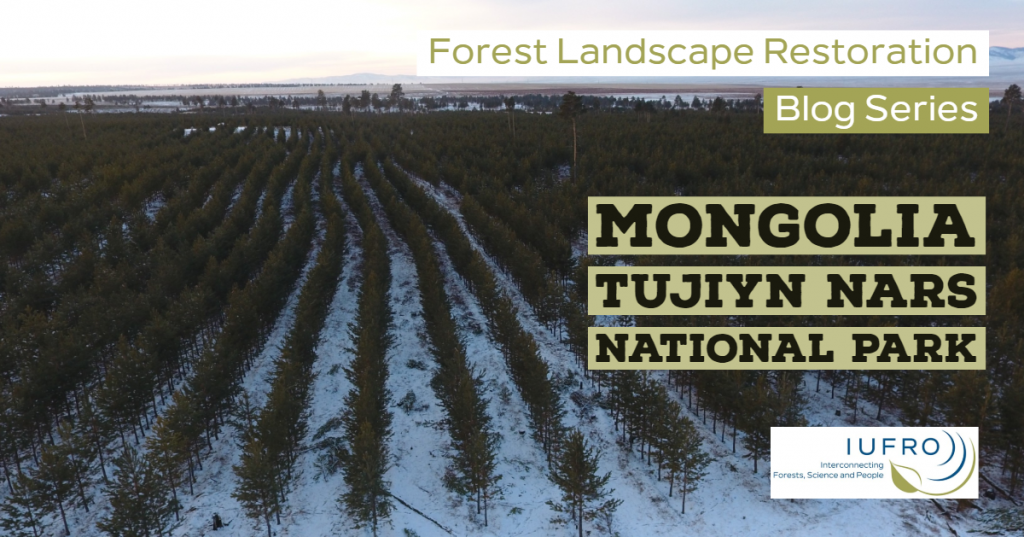Northern Mongolia, sub-taiga forest, Tujyin nars National park, is the second blog post of the FLR Snapshot Series. The second largest landlocked country in the world, land of Mongols, with breathtaking landscapes. Tujyin Nars Reforestation Initiative was created to restore pine forest that had been deforested and degraded due to improper forest harvesting and frequent fires. It has become one of the best examples of successful forest landscape restoration of deforested and degraded forests in northern Mongolia.

The initiative started almost 20-years-ago in the territory of the Tujyin Nars Special Protected Area with the participation and support of decision-makers at the local and state levels. From the beginning, action was taken to attract public attention to rehabilitation and restoration activities, for example engaging famous and priority persons in tree planting activities, and using mass media such as television, radio, and newspapers to call on people, companies, economic entities, NGOs and foreign investors and international organizations to contribute to reforestation Tujyin Nars.
Efforts to improve financial investment, scientific and technological capacities, participation, and suitable and continuous silvicultural management were core components of the initiative and led to the successful restoration of deforested area in northern boreal forest region of Mongolia. Over 1,150 people were involved in medium-term and short-term training at various levels, including forest managers, engineers, foresters, loggers, members of forest communities, local unemployed people. Capacity development focused on technical approaches for production of seedlings and tree planting to ensure survival, growth, and vitality of scots pine seedlings originating from the current forest region. The reforestation activities helped to reduce unemployment and poverty by establishing temporary and permanent jobs in seedling production and tree planting.
Threats to successful restoration of the area were mitigated by establishing stronger legal protection, and agreements with local herders to help reduce grazing pressure and detect wildfire or environmental violations. The Tujyin nars forest area was officially adopted as National Park in 2002 with the aim of providing stronger legal basis for limiting deforestation and anthropogenic disturbances. To improve forest protection and reduce the negative impact of herdsmen families to the forest, three forest communities were created and several (5) small projects including a sea buckthorn plantation, seedling production, and processing of fruits and milk products involving families living in the buffer zone of the National Park. The implementation of these projects and close cooperation with members of the forest community led to improved protection of forests from illegal logging and forest fires by detecting negative human actions in the forest early on.
Mongolia has committed 0.6 million ha by 2020 to the Bonn Challenge – a global effort to bring 150 million ha of the world’s deforested and/or degraded areas into restoration by 2020 and 350 million ha by 2030.
Want to learn more about forest landscape restoration in Mongolia? Access their FLR Snapshot video, interview, poster, and scientific report here.
Coming up next…
Madagascar: What are the conditions for large scale FLR success in Madagascar.
Make sure to check out the following blog posts and get to know some of the other countries involved in the initiative.

Leave a Reply